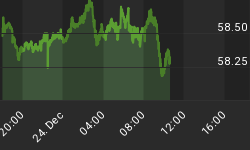UNEDITED
The manufacturing ISM survey increased 2.8 points to 56.6, the highest level this year. Prices paid dropped 2.0 points to 48.5. This was the lowest reading since February 2002 and ends a 40 month span of increasing prices. Production increased 5.6 points to 61.2, the highest since September 2004. New orders advanced 3.4 points to 60.6, highest since November 2004. Employment expanded in July after slightly contracting the past two months.
The non-manufacturing ISM survey dropped 1.7 points to 60.5. New orders increased 2.4 points to 61.9. Both new order exports and imports rose 3.5 points to 53.5 and 62.0 respectively. The biggest increase came in the prices paid component, which soared 10.5 points to 70.3. This was the highest since December 2004. It is interesting that price in the non-manufacturing survey surged, while prices actually contracted in the manufacturing survey. There has been anecdotal evidence that companies were raising prices during the summer. This might be an indication that manufacturers are having successes in the price increases.
Ford and Chrysler followed General Motors lead and instituted employee-discount pricing in July. While the discounts were only a few hundred dollars more than earlier promotions, it boosted auto sales almost as much as the launch of zero-percent financing. Total July sales surged to 20.9 million annualized rate. This was the third highest annualized rate ever. Truck sales led for each of the three domestic automakers. Ford sales jumped 28%, led by a 33.6% increase in truck sales. Ford also announced that the employee-discount will apply to some of its 2006 SUVs. Chrysler sales increased 25%, with truck sales advancing by 33.5%. GM sales were up 19.8%which followed a 47% increase in June.
After Ford and Chrysler announced that they would keep the employee pricing, GM announce it would keep the promotion for another month. For the 2006 model year it plans on dropping the pricing strategy of huge rebates and has adopted a program called "Total Value Promise." GM hopes that by listing vehicles closer to actual selling prices and eliminating the rebate that sometime amounted to 20% of the list price, it will be more competitive when buyers research vehicles. The massive rebates allowed buyers that were "upside down" on their current vehicle to get out of the old loan without having to get a loan that was higher than the sticker price of the new car. Without these rebates, it might be more difficult for buyers that owe more than their car is worth to buy a new car. Considering that about thirty percent of car buyers are upside down, this could be a material side-effect.
Even with the heavy promotions from the domestic automakers, the Japanese makers increased sales as well. Nissan led the pack with sales up 15.0%. Toyota sales were up 8.1%, while Honda's sales advanced by 10.3%. So it was more of the domestic automakers luring in more buyers than getting buyers to purchase their vehicles instead of a competitors.
The strong auto sales has boosted consumer spending, but it might have siphoned spending from other areas of the economy. Haverty Furniture reported second quarter earnings that failed to meet analysts' estimates. In its earnings release, the company listed off several reasons that results were below par. "We believe that sales for big-ticket furniture items have been hampered by a number of factors including: rising fuel costs, continued negative impressions concerning the economy in the media, and heavy promotional activity by the automobile industry."
While there could be some truth to Haverty's comments, its likely more of an excuse. Retail sales were strong during the second quarter and strengthened during the quarter. Retail sales surged during the last week of July. The ICSC Chain Store Sales Index jumped 4.9% from last year. This was the largest year-over-year gain since June 2004. The ICSC forecasts that July chain store sales increased at least 4%.
At the end of last week, about three-fourths of the S&P 500 had reported second quarter earnings. The vast majority (69%) exceeded analysts' estimates. This has pushed up earnings growth estimates to 11.1%. Up from 8.8% at the beginning of the quarter and up from 9.4% the prior week. Additionally, third and fourth quarter earnings growth has been increased. Third quarter earnings are now expected in increase 15.9%, up from 15.1% at the beginning of July. Fourth quarter earnings growth estimates have increased to 13.4%, up from 12.2% a month ago.
Companies are encouraged that commodity prices have moderated. While prices are still up from last year, prices have leveled out since the first quarter. Plus, since commodity prices accelerated during the second quarter last year, the "comps" for the third quarter will not be as bad, especially since most companies have been able to pass along at least a portion of high raw materials prices. One headwind that has developed is the stronger dollar. The multi-national companies have enjoyed a weaker dollar for the past several years. A weaker dollar helps domestic companies in three ways. Overseas revenue is translated back at more favorable exchange rate, which enhances revenue. It also allows US companies to be more competitive overseas. Since revenue will be higher after exchanging into dollars, companies can lower prices to gain market share without sacrificing margins.















